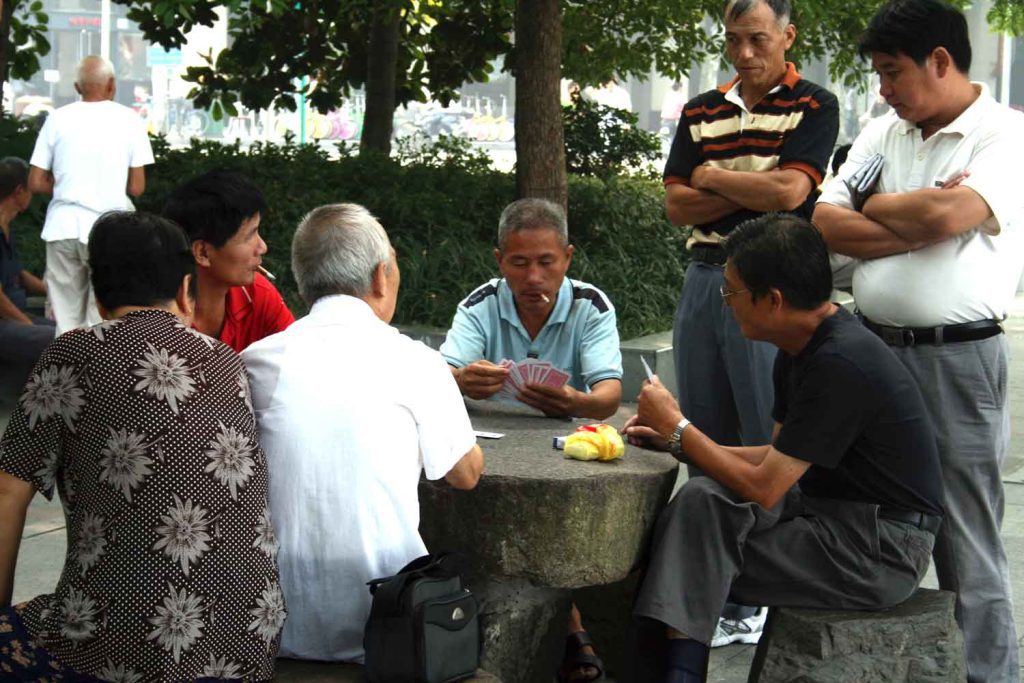One Country, Two Systems
- Also in TR Print Edition
- June 1, 2023
- 0
- 11 minutes read


China and Hong Kong are responding differently to the issues raised by e-cigarettes.
By George Gay
It has often been said that if the health risks of consuming tobacco had been foreseen, tobacco products would not have been allowed on the market. That is a big if, a rather shaky premise to be sure, but if one accepts the premise, the conclusion probably* stands up.
So, looked at from one direction, Hong Kong’s reaction to e-cigarettes can be seen as logical whereas the reaction of mainland China looks inconsistent. The authorities in Hong Kong decided that e-cigarettes posed an unacceptable health risk, so, in April 2021, they banned the manufacture, import, distribution or sale of “alternative smoking products,” including e-cigarettes, before they became well established. Of course, accepting the validity of this position requires one to ignore the fact that Hong Kong seems to regard e-cigarettes as tobacco products and, therefore, not a new product that could be nipped in the bud; but logic has its limits.
Mainland China, on the other hand, while also holding that e-cigarettes pose a health risk, decided to allow them to be manufactured, exported, imported and sold on the local market, subject to certain conditions. That the authorities believe e-cigarettes pose a health risk, perhaps akin to the risk posed by combustible cigarettes, can be assumed given the former are being regulated in a manner that, in part at least, mirrors the regulation of the latter.
Hong Kong and mainland China have long invited comparisons in relation to their attitudes to tobacco, and one of the interesting questions posed by the current situation asks whether Hong Kong has taken a more ethical line on e-cigarettes than mainland China. In one way, I think it has because it has followed through on its assessment of vaping, but I also think that its approach has been wrong because it does not seem to take sufficient account of the good that e-cigarettes can do in helping smokers quit their habit.
In other words, Hong Kong’s view is based on a quit-or-die approach to smoking whereas the approach of mainland China seems to give the nod to tobacco harm reduction. On mainland China, vaping might be treated largely the same as smoking, but there is a recognition that, at the same time, there is a difference. This approach might be seen as requiring an ethical tightrope walk, but, to my mind, it has the advantage of accepting that the world is a messy place in which logic has its limits and compromise is better than confrontation.
Double Standards
It is also the case that Hong Kong might be seen to have taken another knock to any ethical claims that it might have made in relation to e-cigarettes. According to a Nov. 28 story in the South China Morning Post (SCMP), the government has proposed scrapping a ban on the use of Hong Kong as a staging port for the export of “alternative smoking products,” such as electronic cigarettes from mainland China, an amendment that is due to come before the legislative council this year, I believe. The ban might have been seen as making an ethical stance on behalf of people living in countries where the shipments would have ended up, but the reason for proposing the abandonment of the ban showed that practical rather than ethical forces have been at work. Once it was realized that the ban had been part of the cause of a plunge in air cargo volumes out of Hong Kong between 2021 and 2022, a proposal was put forward that involved creating a secure area for transshipping such alternative products arriving from mainland China by road and sea and introducing various safeguards to prevent these products leaking onto the Hong Kong market.
The Proof is in the Pudding
Meanwhile, one upcoming and interesting comparison between Hong Kong and mainland China will be the success that each will have in reducing smoking—that’s smoking, not vaping. Presumably, vaping will drop away in Hong Kong while it is likely to increase in mainland China if, as elsewhere, some smokers take the opportunity to switch.
The comparison will be difficult to make, however, because they are starting from different positions. In 2021, Hong Kong’s smoking rate dropped below 10 percent (to 9.5 percent from 10.2 percent) for the first time while mainland China’s smoking rate is thought to be about 25 percent, meaning, I suppose, that when it comes to encouraging people to quit smoking, mainland China has a higher proportion of low-hanging fruit than Hong Kong.
No matter what, both will have to contend with the illegal trade in cigarettes if they are to reduce their actual rather than their recorded smoking rates. A report in The China Daily last year said that public security organizations nationwide had responded to 43,000 tobacco-related crimes and detained 44,000 suspects from 2017 to 2021. During the same period, the police were said to have seized 2.1 million counterfeit cigarettes, nearly 100,000 tons of leaf tobacco and about 1,700 machines used to make the fake cigarettes.
It is, however, difficult to know what to make of these figures without knowing a little more; what, for instance, constitutes a tobacco-related “crime” in China? If tobacco-related crimes take in minor infractions (as the almost 1-to-1 ratio of suspects to crimes suggests), 43,000 crimes and 44,000 suspects during a five-year period across a population of 1.4 billion looks like small beer.
Similarly, 2.1 million counterfeit cigarettes in a country that produces more than 2 trillion cigarettes annually looks insignificant, though, of course, the 2.1 million figure represents only the sum of snapshots in time, taking no account of the number of cigarettes that had been shipped out before the police arrived. A better indication of the scale of the counterfeit operations raided is possibly given by the 100,000 tons of seized leaf tobacco, which, even given that illicit cigarettes presumably contain more tobacco than licit ones, would make it possible to produce at least 100 million cigarettes. It is impossible, however, to take anything much from the seizure of 1,700 machines, given that it is not known what constitutes a machine in the view of those seizing these things.
However, is it possible, I wonder, for the authorities to use such figures to their advantage? Given that tobacco is a monopoly operation on mainland China, and given that the authorities must have available to them more detailed figures than appeared in the newspaper report, including those to do with at least the basic financials of the counterfeiting operations, they could presumably calculate the tax-paid prices that would have to be charged at retail for licit cigarettes to put the counterfeiters out of business.
That would surely be a more reliable and less challenging method than using, as now, joint agencies to target the supply chain of raw and auxiliary materials used in the production of fake products and the production and distribution of counterfeit cigarettes both locally and offshore. Such an approach would have its detractors, but little is likely to change while there is seemingly no attempt to face up to the realities of the illegal trade and try new methods of addressing it, especially those concerned with prevention.
Head in the Sand
Currently, many people seem to be in denial about the illegal trade in cigarettes. On Jan. 31, the chairman of the Hong Kong Council on Smoking and Health was quoted in an SCMP report as saying there was no evidence that the level of tax on tobacco had a direct relation with the sale of illicit cigarettes. But, on March 1, a report in The Standard suggested that an increase in sales of illicit cigarettes might have been due to rising tobacco prices caused by inflation. These cannot both be right. The idea that smokers buy illicit cigarettes in reaction to price increases caused by inflation but not those caused by taxation is not credible.
In defense of the idea that tobacco tax increases do not cause illicit cigarette sales to rise, the government’s anti-tobacco advisers were quoted in the Jan. 31 SCMP story as saying the illicit trade in cigarettes had thrived for years even though the tax rate had remained unchanged. But this argument doesn’t hold up for a second. One interpretation of the fact that illicit cigarette sales had continued to rise while taxes remained the same would be that the existing tax level was seen by many smokers as having been way too high when it was introduced and still too high now. And this argument does not take account of the fact that once the illicit gates have been opened, it is devilishly difficult to close them. Illicit cigarettes become normalized in the eyes of many smokers, as speeding becomes normalized in the eyes of many drivers.
There was also evidence for this in the Jan. 31 SCMP story, when it was reported that the results of a survey of 2,000 smokers and nonsmokers suggested that buying illicit cigarettes was “quite easy.” Smokers, it was said, could now have illicit cigarettes delivered to their homes by making a call or sending a text on WhatsApp or WeChat.
One of the taxation arguments that has long bothered me was put forward in a Nov. 3 SCMP report when it quoted a lawmaker representing the wholesale and retail sector as saying poorer smokers would not be able to afford cigarettes after a then proposed price rise caused by a 30 percent increase in tobacco duty, an increase that was imposed in February. “I agree with a reasonable tax increase by following the inflation rate, or else [the frozen tax] will sound like encouraging smoking. But if the increase deviates too much, it is a discrimination against the poor as the rich will not be affected,” the lawmaker was quoted as saying.
I realize there is a limit to logic, but this is a strange way to look at things if at least one of the objectives of the tax increase was to stop people smoking. Surely, if better-off smokers will not be affected by such a rise, it is they who will be discriminated against because it is they who won’t be forced to quit. A system that was fair across the board would have to be one that stretched the finances of all smokers to maintain their habit. And such a system would have to be linked to incomes. Under it, a billionaire, for instance, might have to pay about $10,000 for a pack of cigarettes. Harsh but fair.
*Of course, what is never mentioned is whether tobacco would have been allowed on the market if the health risks had been known and if the economic potential of the tobacco industry had been foreseen at the same time.
